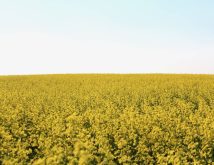Early seeded canola crops in Manitoba are likely past their fungicide window for sclerotinia, but growers with late seeded crops may want to be scouting, especially if they’re in areas that finally got rain in June.
WHY IT MATTERS: A dry start to the 2025 growing season didn’t exactly set the stage for sclerotinia, but there’s been enough rain that producers should have been scouting in early July
Manitoba has a broad spectrum of canola development this year. The July 8 crop report from Manitoba Agriculture noted that the long seeding window this spring has turned into a wide range of growth stages, from full flower in the earliest crops to four-leaf or rosette-stage crops on the other end.
Read Also

Journal pulls long-cited glyphosate study for ethics violations
The journal Regulatory Toxicology and Pharmacology has retracted a 2000 Monsanto-linked glyphosate review, drawing new scrutiny as Bayer faces mounting legal pressure.
The provincial department also said fungicide was being applied.
Welcome rain, but also disease risk
June somewhat broke the province’s dry spell.
The back half of the month saw many locations — including Deerwood (26.6 millimetres), Brandon (27.9 mm) and Manitou (26.8 mm) — receive between 20 and 30 millimetres of rain from June 16 to 22.
That was good news for thirsty crops and pastures in the province, which had seen near-zero rainfall earlier in the season.
The return of moisture and high humidity, however, put disease pressure back on the table, especially in dense canola canopies.
Last year’s sclerotinia situation — when fields were considerably wetter leading up to flowering — has created heavy pressure since sclerotinia bodies potentially remain viable in soil for more than five years, said Todd Drummond, customer service lead at Bayer Crop Science.
Last year marked an end to the break Manitoba had been enjoying from significant sclerotinia issues, a silver lining from consecutive dry years that had seen a few seasons of significant drought.
“In 2016 we had lots of sclerotinia bodies. But every year after that … all the way through to ’23, we felt that we maybe had lower pressures,” Drummond said.
In 2023, Manitoba’s canola disease survey found that sclerotinia had almost slid off the map. Only 13 per cent of surveyed fields had the disease. Last year, 57 per cent of the 138 fields looked at showed sclerotinia infection.
Sclerotinia wakes up
Sclerotinia bodies in soil can germinate when conditions are right to produce spores that infect canola petals. Those infected petals then fall into the crop canopy where moisture allows the disease to take hold, Drummond told attendees of a Crop Talk webinar put on by Manitoba Agriculture, July 9.
“What is important to remember with sclerotinia is you need the disease triangle,” he said.
There needs to be a host (in this case, canola), the pathogen needs to be around and there needs to be the proper environment for disease development and infection.

Ground moisture is a key factor to that disease-friendly environment, he said.
The Prairie Crop Disease Monitoring Network notes that it typically takes up to three weeks for sclerotinia’s fruiting bodies to germinate once they get the correct temperature range and moisture.
Patchy moisture still in Manitoba
Current moisture conditions vary significantly across Manitoba. Northern areas remain dry, while southern and southwestern regions are seeing 70 to 90 per cent of normal precipitation based on 30-year averages, according to data presented at the webinar.
Soil moisture data published by Manitoba Agriculture also notes that the top 30 centimetres is very dry in the northern Interlake and Parkland near Minitonas and that swaths of dry conditions extend south through western Manitoba and into central Manitoba, but the province also has patches of wet soil, particularly along the U.S.-Canadian border.
Timing still key for late-seeded fields
The Canadian Canola Council puts fungicide timing for sclerotinia at 20-50 per cent flower, with ideal timing closer to the earlier part of that range.
The window effectively closes out at 50 per cent, Dummond said, but he advised producers target treatment at 20 to 30 per cent bloom, or 14 to 20 open flowers on the main stem.

“The issue with going too late is, if the pressure has been higher and the disease pressure is there, then you probably already have disease within there,” Drummond said. “The reason we go at 20 to 30 per cent is because there’s not many branches. And if that (petal) has a tendency to fall all the way down and gets down to the very bottom … 50 per cent bloom, there’s way more branches.”
Fungicide still pays off in dry years
Research data from 2021-2023 presented at the webinar shows fungicide applications can provide yield benefits even under low moisture conditions, with increases ranging from half a bushel per acre in dry years to three bushels under average rainfall conditions.
Producers are advised to scout fields regularly and consider local moisture conditions when making fungicide application decisions, as the disease requires sustained soil surface moisture to activate dormant sclerotinia bodies.
















